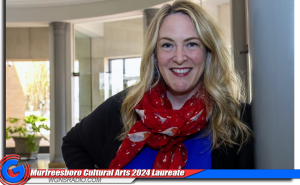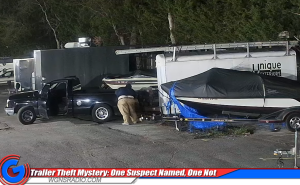Lawyers in Middle Tennessee now have access to a huge collection of past court cases that may not be posted online or available in downloadable PDF files. That collection of past cases is housed in Nashville, Tennessee. In fact, the secret location of files would likely equal 26-miles of pages, if laid side-by-side – equaling the distance between Murfreesboro and Nashville.
In fact, the TSLA’s largest collection, and also one of its most frequently requested, is composed of historic Tennessee Supreme Court cases. The collection runs to over 10,000 boxes and dates back to the early 19th century. For about 15 years, the TSLA has undertaken the massive project of indexing these records. Court of Appeals Judge Andy Bennett, through his leadership role in the Tennessee Supreme Court Historical Society, was instrumental in initiating that project.
“Originally, those boxes of records were stored in the attic of the capitol building. The capitol attic wasn’t heated or cooled so the papers there were subject to extremes in temperature, which isn’t good for paper,” he said. The building was also heated by coal so coal dust would waft up into the attic, soiling the records.
As Judge Bennett explained, although historic Tennessee Supreme Court opinions have long been published and available to researchers, access to the full records of these cases is invaluable.
“You can open up a book and find the opinion, but you don’t have the briefs. You don’t see the arguments. You don’t have the depositions that might be referred to in the opinion, and these files have all that,” Judge Bennett said. “If you really want to go behind the opinion, these documents are great.”
The files may also contain the local court records for the cases that eventually made their way to the Supreme Court, as Tennessee State Librarian Chuck Sherrill explained on a recent tour of the new TSLA building.
These cases are a powerful testament to the rich and complicated history of the state. Some of them are notable because they address the most important issues of the day. For instance, the case of Ford v. Ford, dating back to the 1840s, involved a slave-owner who wished to manumit his slaves and leave his land to them upon his death. The man’s children contested the will and the case wound up in the Supreme Court. In the end, the man’s wishes were honored, and the slaves were freed and given the land.
Even cases with less historic significance provide an unprecedented level of access to the customs and beliefs of the past, such as the rustic practice of fishing with dynamite, or the bygone image of domestic disputes ending with a husband retreating out to the barn. There is also the thrill of personal discovery. Judge Bennett had the honor of sharing the details of the Ford v. Ford case with some of the Ford slaves’ descendants last year who were unaware of the improbable legal victory their ancestors had won in the antebellum South. Judge Bennett himself, in the course of research, even found two historic Supreme Court cases involving his own relatives.
Sherrill said that the value of those discoveries can be compounded by the nature of the files themselves. For instance, some of the cases include dozens of depositions, which provide a flavor of the way people spoke at that time. Not only might a user find out that their great-great-great-great-grandfather had some involvement in a Supreme Court case, they might also be able to read their relation’s own exact words.
“The level of detail in the testimony is just amazing,” he said.
Another TSLA holding that is especially useful to lawyers and judges is the Library and Archive’s legislative history collection. That collection encompasses old volumes of state codes as well as decades worth of recordings of Tennessee legislative hearings.
“When the statutes are ambiguous, we’re allowed to go and look at the legislative history, which is essentially the debates in the legislature and in committees about bills as well as any reports that are made about bills,” Judge Bennett explained. “Those can shed light on the intent of the legislature.”
Judge Bennett said that when he was a practicing attorney he spent a great deal of time, sometimes entire days, listening to these recordings, trying to parse exactly what a particular phrase or sentence in a piece of legislation meant. He also often consulted other legislative records at the TSLA, including one legislative report that he quoted in a brief for a case before the Supreme Court of the United States, Burson v. Freeman. The U.S. Supreme Court, in turn, cited the report in its opinion. Judge Bennett has also continued to consult the legislative history collection as a member of the judiciary, where discerning legislative intent can sometimes factor into the formation of his own opinions.
Vince McGrath oversees this collection at the TSLA, as the institution’s legislative history coordinator. He said the new building offered major improvements in the way the material in this collection is stored. Instead of the legislative material being scattered across different parts of the building, there is enough room for it all to be in one place.
The same is true for the TSLA’s overall vast collection of holdings, which Sherrill estimates would stretch 26 miles if laid side by side. To find and retrieve records in the new building, an automated storage and retrieval system (ASRS) consisting of three different robotic cranes pulls materials for patrons from a vast temperature-and-humidity-controlled storage area.
Patrons can simply send a request for a piece of material through the catalog and, after the request is approved by an archivist or librarian on duty, it is sent on to the storage area, where one of the cranes finds it amid over 8,000 bins and 700 shelving units of holdings. Once the material is located, the crane brings it to a loading and unloading area where it is scanned by a staff member and sent down to the patron.
This large, dedicated storage space allows the new building to offer more to its visitors, as Sherrill explained.
“This building is about 65 percent larger than our previous building,” he said. “The wonderful part about the square footage in this building is that so much more of it is public space rather than storage space. That allows us to use the square footage for things like our wonderful lobby and exhibits, or meeting and conference rooms, or the nice, large reading room.”
State lawmakers passed funding for the new 165,000-square-foot Library and Archives building in 2017. Visitors eager to learn more about the past may start their research in the new 12,000 square foot reading room, where TSLA archivists are stationed and ready to help those interested in genealogical research, historic records, or any other number of topics.
“This space is far more user friendly and far more spacious,” TSLA Director of Public Services Gordon Belt said. “Although we loved our old building, and it did have architectural character, we really ran out of space to serve our patrons, so we are really grateful to have this brand new facility open to researchers.”
Sherrill agreed, noting that this new state-of-the-art home for some of Tennessee’s most valued documents had been worth the wait.
“We’re really proud of this new building for the Tennessee State Library and Archives,” Sherrill said. “It is the realization of a long-held dream for so many people.”












